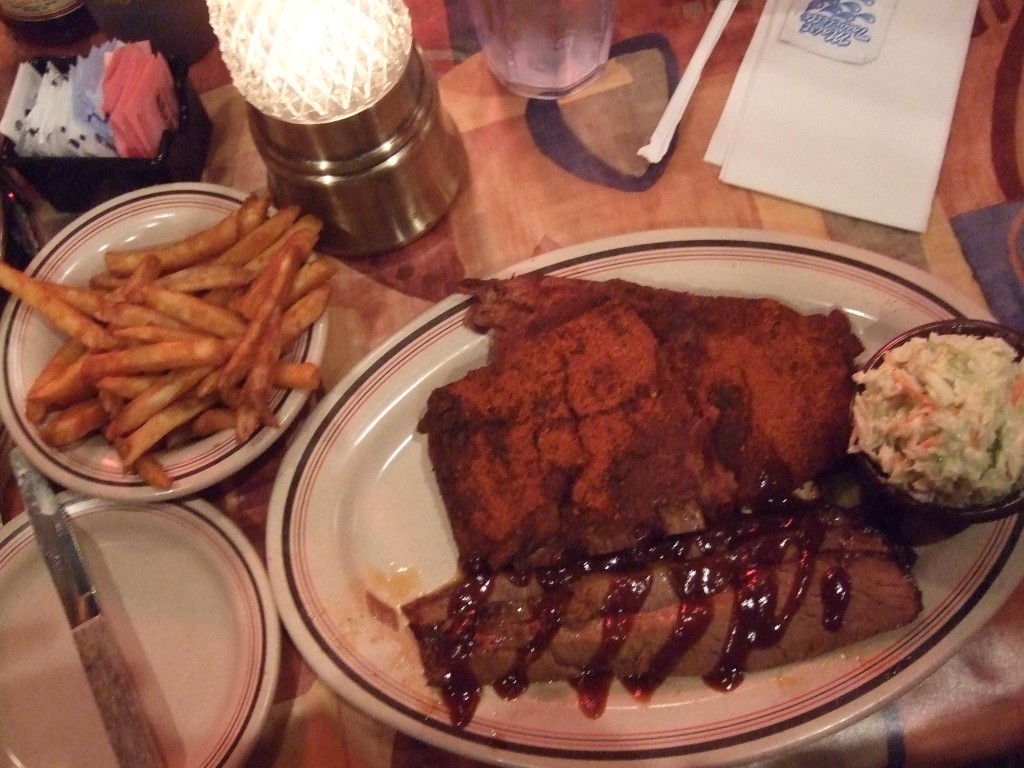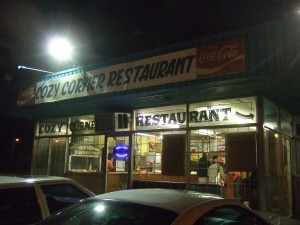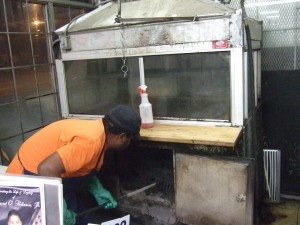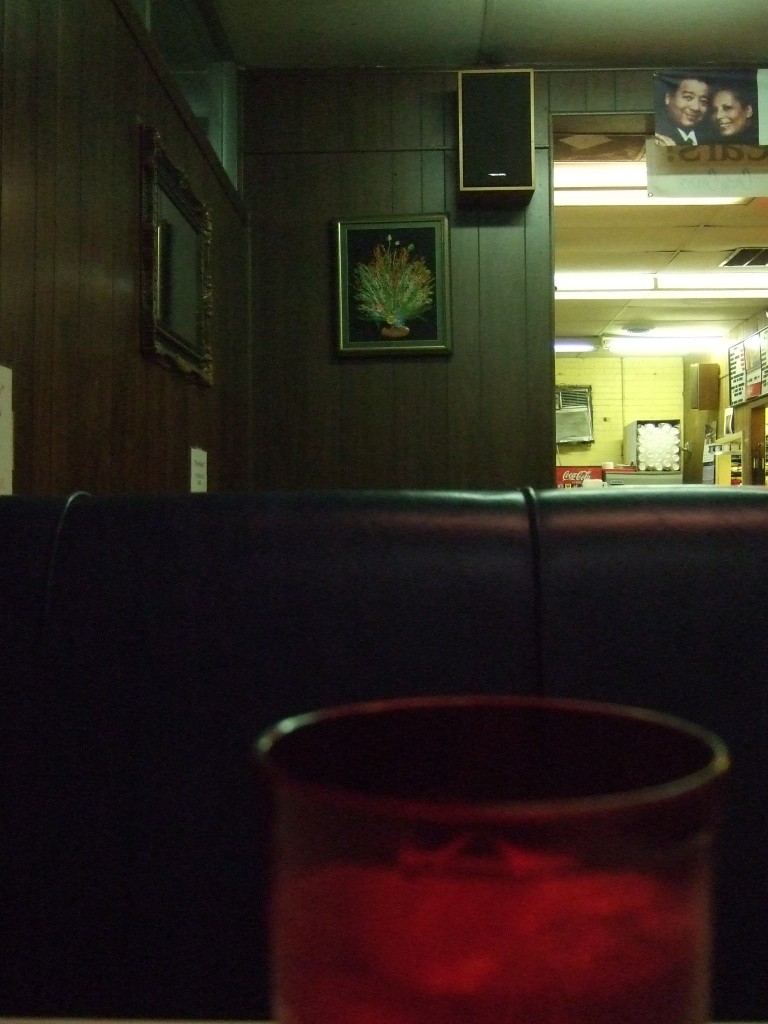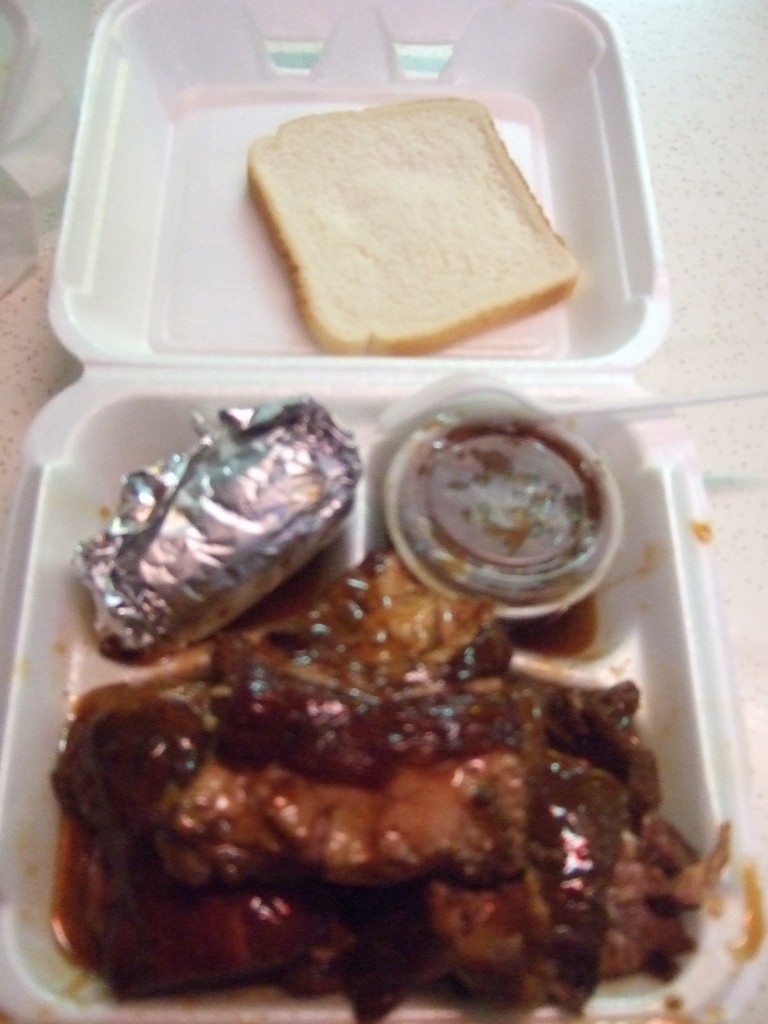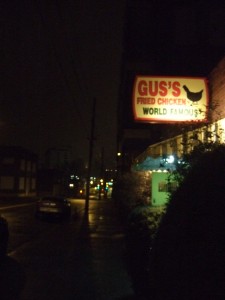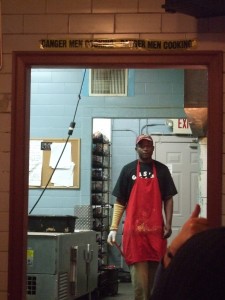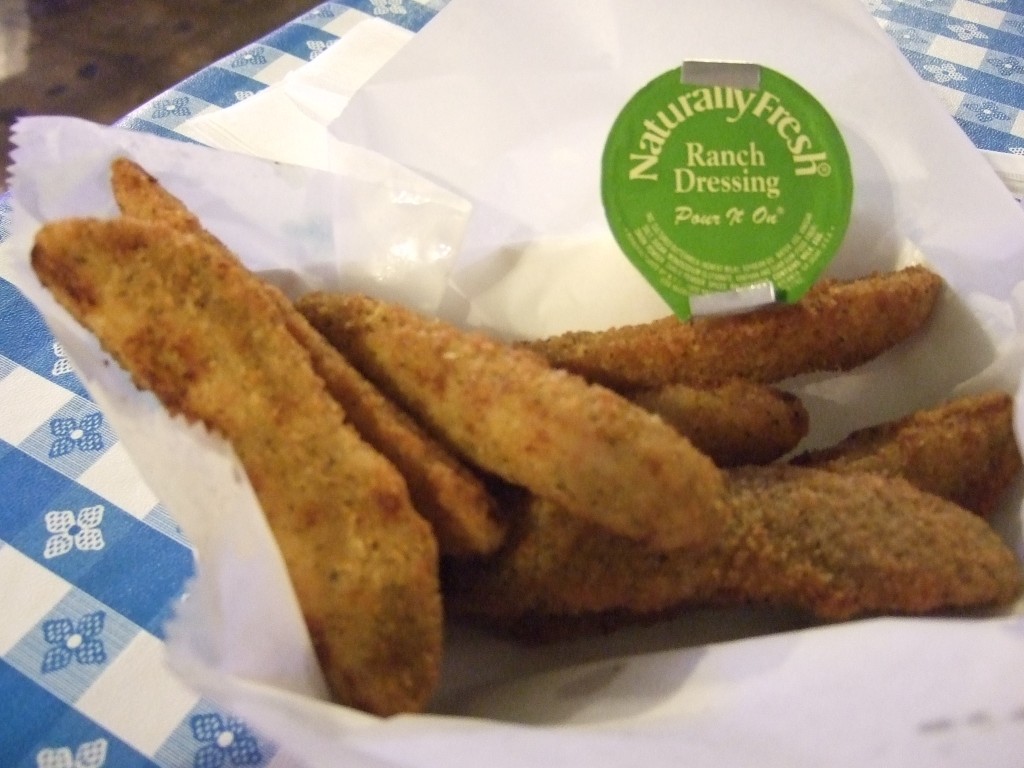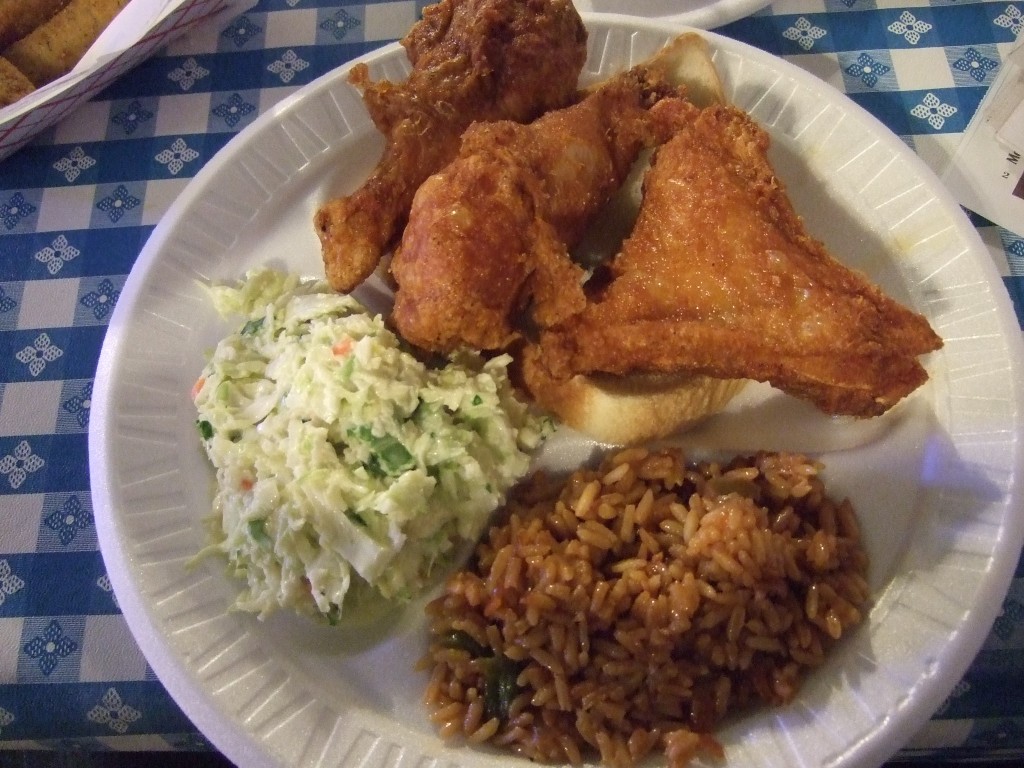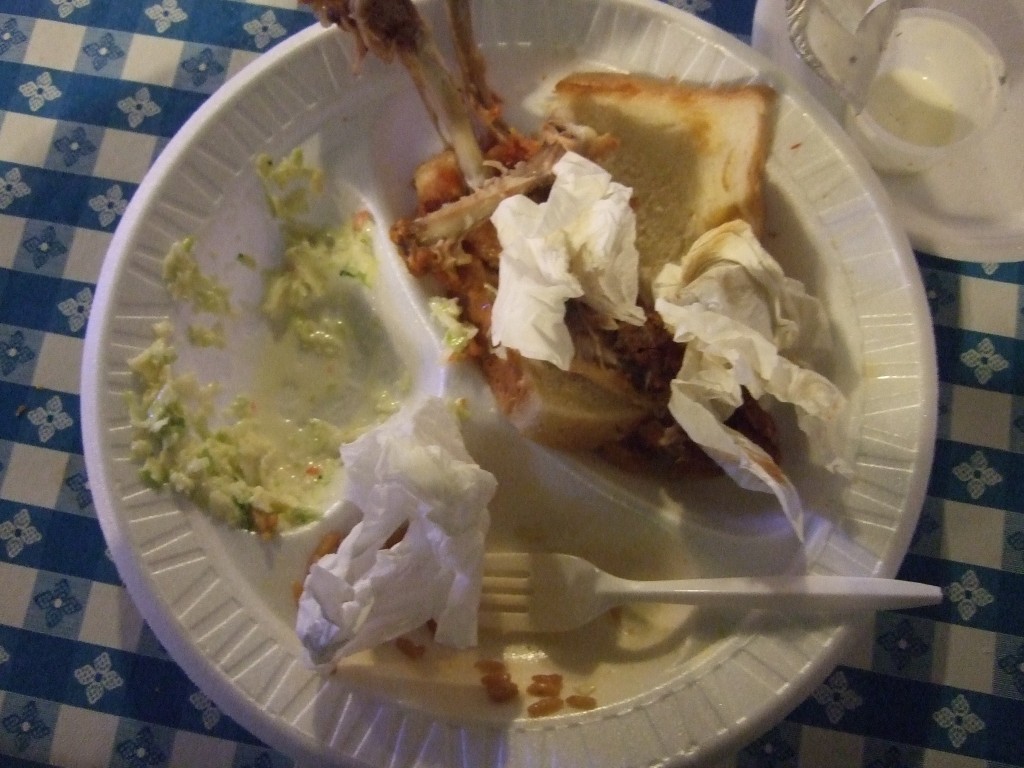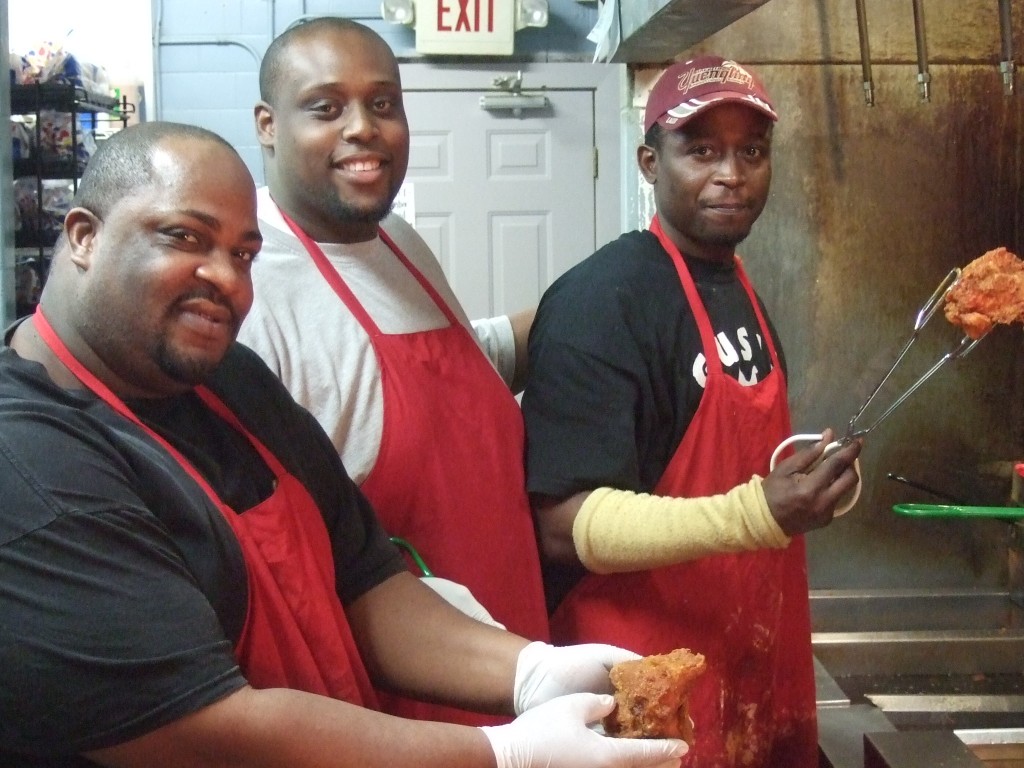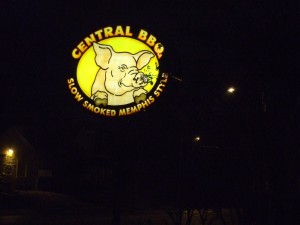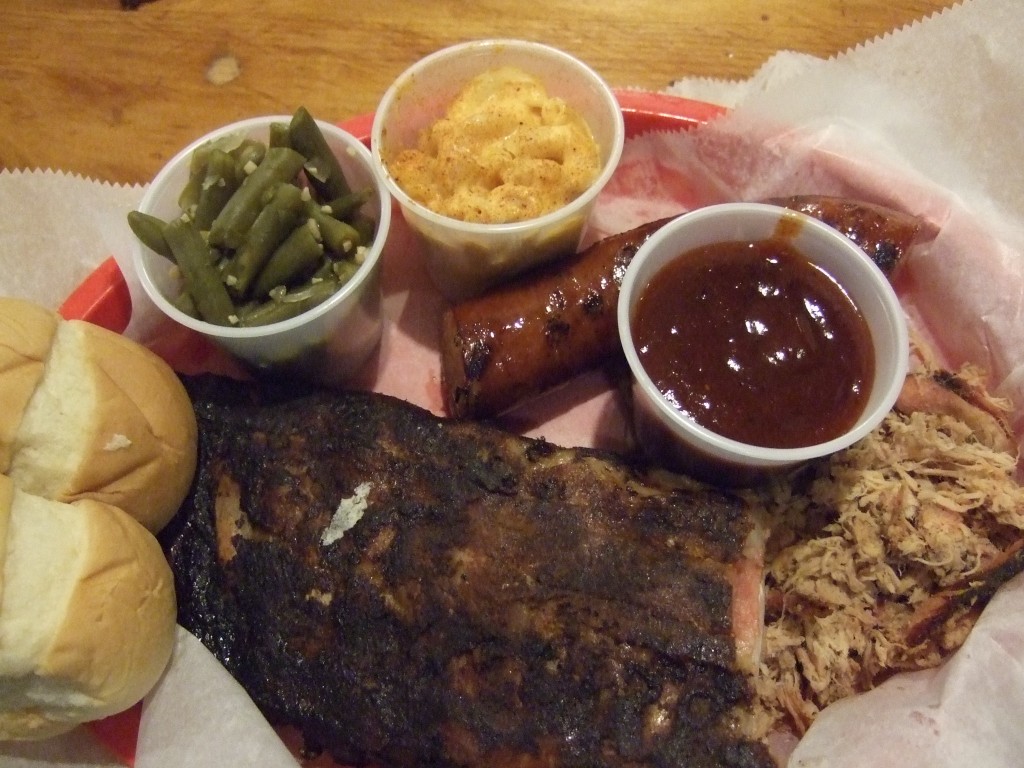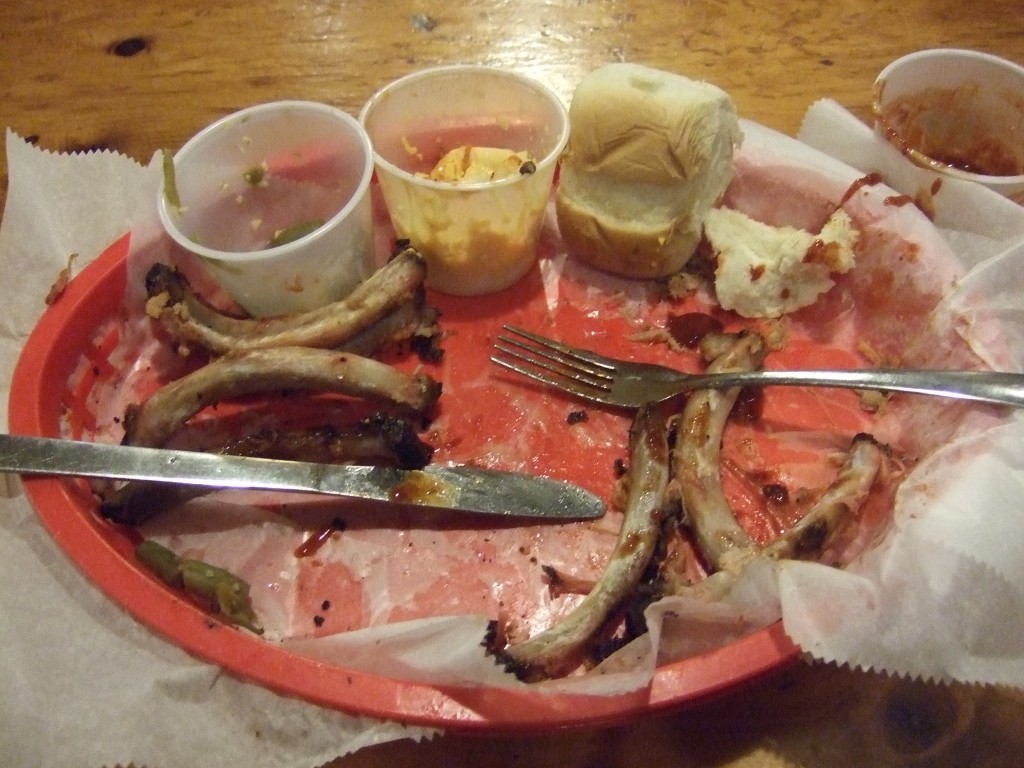Thanks to my sister, Cheryl, a frequent contributor to this site, who for Xmas and my birthday gave me the gifts of a digital food scale and the Tartine Bread book, I endeavored this past weekend to do a comparison of sorts between Jim Lahy’s no knead bread and Chad Robertson’s Tartine country bread.
While I’ve always had good success with the no knead bread in terms of taste and texture. My loaves have always been on the flat side, not rising during baking nearly as much as I always hope. Now this could just be due to my lack of technique (though this method requires little in the way of technique) because Matt, my sis, Niels, Bret and PK (alright everybody else) have all gotten pretty lofty loaves when they’ve baked a no knead loaf. My loaves always end up looking more like hockey pucks – tasty hockey pucks, but hockey pucks nonetheless.
For the purposes of the test, I followed both recipes to the T, though I halved each recipe because I didn’t have enough flour and honestly, Shef and I can’t eat that much bread. Lahy’s recipe is for one loaf, so essentially, I made a half loaf, or mini loaf in the no knead vein. Robertson’s recipe is for two loaves so by halving that, I made just one loaf. I used the same ingredients for both: bread flour, sea salt, water and the beloved sourdough starter (which come to think of it, has been in my possession now for two years – so tending a starter might very well be great preparation for having kids). I fed the starter in the early afternoon on Friday and made sure that it was bubblingly active for both breads.
The No Knead Loaf
Lahy’s recipe actually just calls for dry active yeast, so I suppose using a natural starter is a bit of a variation but everything else faithfully followed the recipe. Here’s the breakdown for the mini loaf:
Flour- 200 grams or 1 1/2 cups
salt – 4 grams or 5/8 tsp sal
starter – 2 tbsp
water – 150 grams or 2/3 cup
I mixed all the ingredients at 8 pm on Friday night and then at 12 pm noon the next day (16 hours later) I reshaped for the second rise (third on top of third on top of third, etc.). I let the loaf rise for another two hours (it didn’t rise much, as usual) and then I baked it for the requisite time and here was my result:
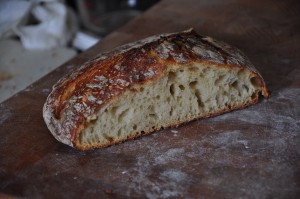
Nice texture and great crunchy crust, but just a little bit flat (as usual).
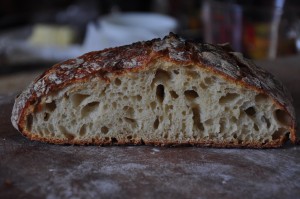
No knead mini loaf. Nice airy loaf, just flat
As usual, it was a tasty loaf with a nice crunchy crust and chewy center, but also as usual, the loaf came out a lot flatter and denser than I had hoped.
The Tartine Country Loaf
With the exception of adding a bit more salt to the dough, I followed this recipe down to the gram and the degree – even measuring the temperature of the water I used. I also employed the proper tools (a dough spatula, bench knife and food scale) because I was not messing around… and I’m a big dork.
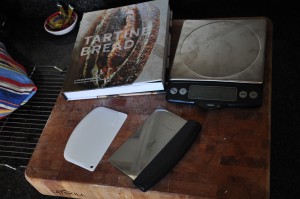
Tartine Bread book, food scale, bench knife and dough spatula
Interestingly, the proportions of water, flour, salt and starter are almost the same as those of the no knead recipe. The main difference is that while the no knead calls for dry active yeast, the country bread calls for natural leaven which according to Robertson is derived from the starter. So in order to make the leaven, I used a couple teaspoons of starter and mixed that with 50 grams of water and 50 grams of flour and let that mix sit out over night before starting the bread the next morning. That mix becomes your leaven. Here’s how the recipe for one Tartine country loaf breaks down:
Flour – 500 grams
Leaven – 100 grams
Water – 350
Salt – 10 grams (I actually used 15 grams)
Now the main difference between the two methods is in how much you actually handle the dough. Obviously the no knead method is a minimalist approach in that once you mix the dough, you don’t handle it until the final shaping before the second rise which precedes the baking. The Tartine method is a bit more hands on (literally) in that you actually do tend to the dough in the first rise – or primary fermentations as Robertson refers to it – of three to four hours. I won’t go into detail here because really the book does a better job explaining (so get your hands on a copy), but I’ll just say, that you’re not really kneading the dough. Rather, you pull it and fold it on itself a few times times (every half hour) during the first couple hours. Between the primary fermentation and the second rise there’s a little bit more in the way of shaping and folding for which I got to use my cool bench knife. I ended up with a real loaf shape which held it’s shape very nicely. I think shaping the dough on the work surface seems to increase the surface tension of the outer dough layer which locks in air and increases the structural integrity of the loaf. The second rise required another three to four hours which actually stretched to about five hours because Shef and I went to the movies and saw a double feature (a twofor as we call them wherein we see two movies for the price of one!) of The King’s Speech and True Grit. Both were awesome. The King’s Speech is like a British period piece bro-mance and True Grit is like a Western road movie/ surreal comedy -something the Coen Brothers do better than anyone else. But I digress. By the time I got home, preheated the oven and started baking the bread, it was about 10 pm. Here are the results:
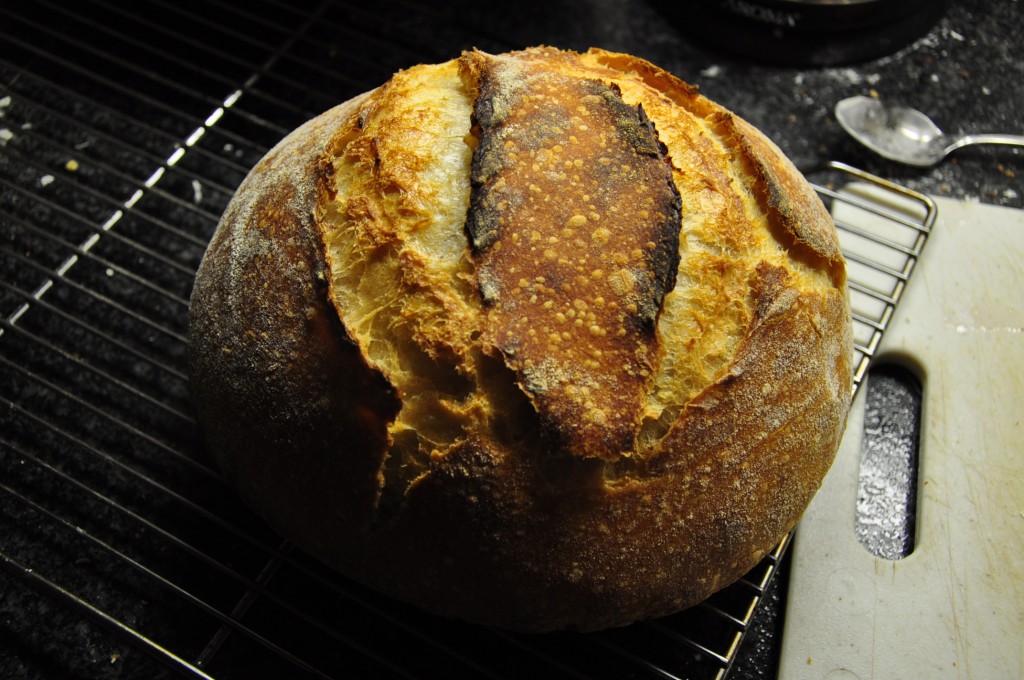
Dare I say, this was the finest loaf I've ever baked? I dare say "yes!"
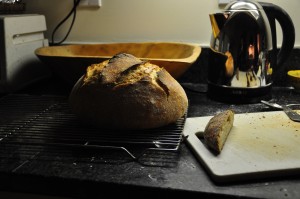
This gives you a better sense of the difference, though it's really unfair because that's the flat end of the mini loaf. We'd eaten the rest with homemade butternut squash soup.
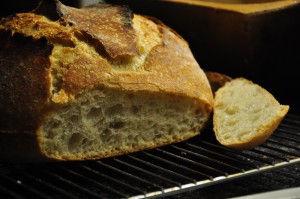
A chewy and light interior that also had a lot of textural integrity.
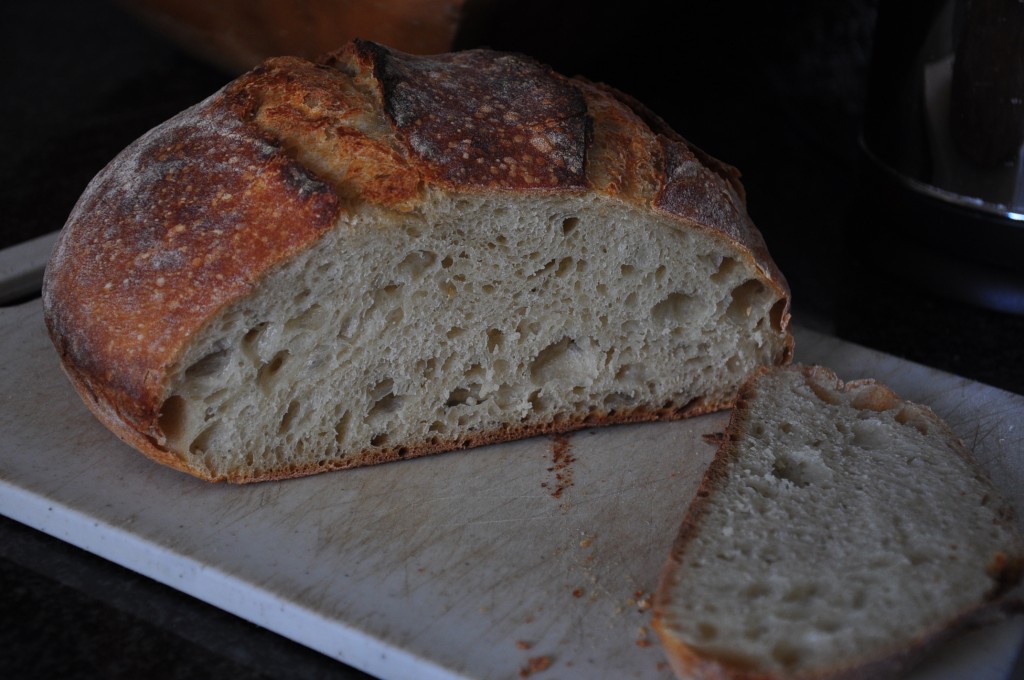
This bread slices very well. The next day, the crust remained crunchy while the interior held up extremely well to the serrated blade of the bread knife. Perfect slices for sandwiches
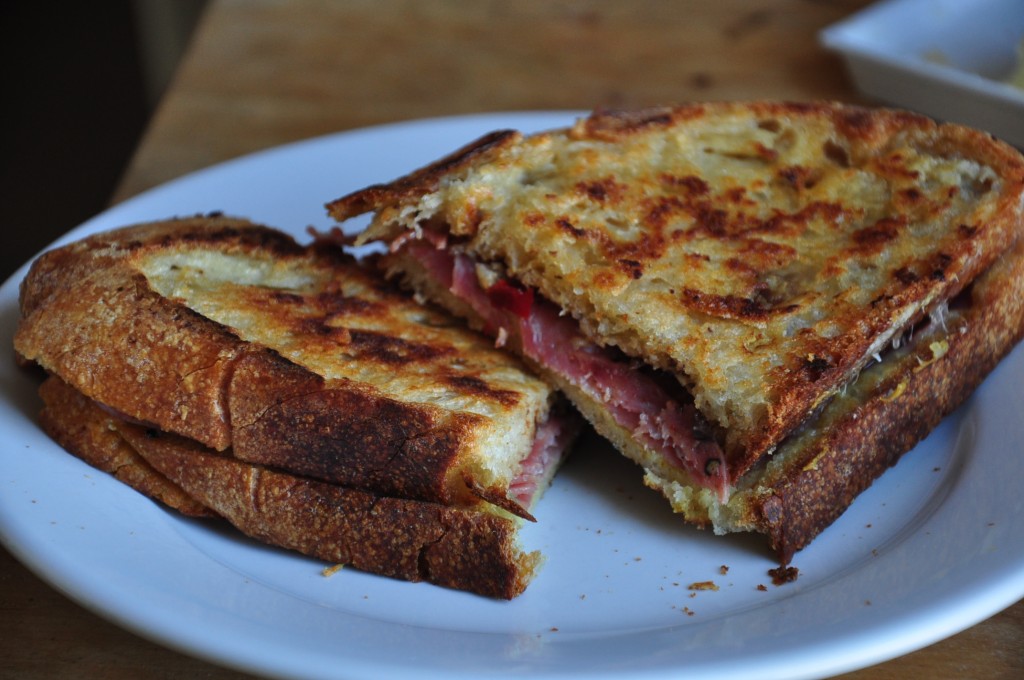
"Croque Clarence" - grilled salami and sharp cheddar cheese with homemade olive tapenade. Delicieux!
The verdict: a smashing success. This technique yielded wonderful results. It’s fair to say, I’ve never been so proud of a bread loaf in my life. The bread rose like a champ and the texture was sublime – the crunch of the crust giving way to the airy, but chewy and firm interior. The flavor while not so different than the no knead, was just just a little more sour and a little more complex perhaps owing to the more delicate and less dense nature of the bread.
Final Analysis
So here’s my break down in terms of the time and labor of each bread. From start to finish, the no knead takes about 20 hours with a minimum of labor. For the Tartine method, excluding the time to make the leaven ( basically just feeding the starter) which is done the night before, from initial dough mix to baked bread it took about 10 hours but required a lot more hands on tending. I would say though, the results were well worth it. However, it’s not something I can devote a whole day to all the time. Perhaps there is a happy medium between the two methods wherein I split the difference and employ certain strategies of both methods to come up with a way to decrease the time necessary for the no knead bread as well as decrease the amount of hands on attention required by the Tartine method. To figure out this middle road, that will be new my mission.
